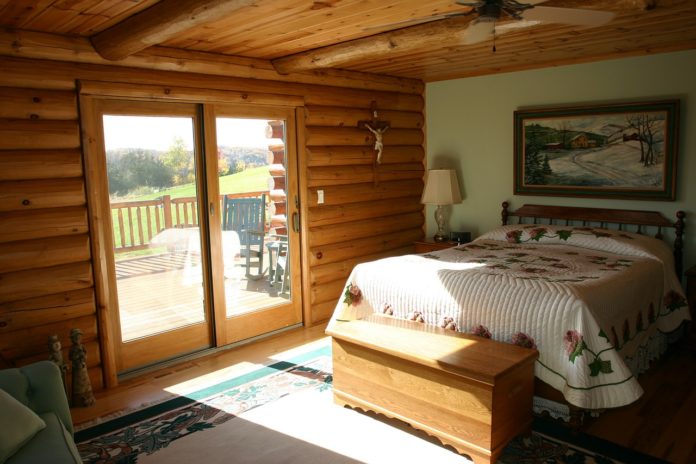Let’s say that you’ve already purchased a land to build your dream log cabin. Or maybe you have land with old structures and thought of knocking them down and building your dream log cabin instead?
So, the first and most important question is, where to start? After all, you would like to start working on this dream right away but don’t rush it and take some tips from the expert before you start anything. Since construction isn’t a one-day job, you have to anticipate your financial possibilities, balance your desires and opportunities, look to the future by imagining your log cabin after many years as your family grows. What doesn’t seem to be important now will take on a whole different meaning later.
First, try to plan your dream log cabin yourself, and only then go to an architect who will put your desires on a piece of paper. Today, we ask specialists from Maestro Cabins to take us through most important aspects of log cabin building and give advice on avoiding costly mistakes.
When planning a log cabin, Maestro Cabins experts’ advice to start with the building area and the composition of your family. Take into account that part of the premises (inventory warehouse, sauna) can and should be a separate building. Since you spend a lot of time outdoors, on the terrace or on the veranda during the warm season, the interior area of the log cabin should not be as large as that of a residential house. Inside should consist of a living room with a kitchen, at least two bedrooms, a storage room and a bathroom. Inside log cabin, try avoiding corridors and hallways as they make spaces look smaller.
Experts also advice to combine several functions in one room, such as a dining room, a staircase with a kitchen, a common room with a bedroom, a veranda with an entrance hall. We recommend planning the terrace and kitchen at the entrance to the log cabin as often they serve as a hallway.
Terrace should not be narrower than 2 meters and not less than 10-12 m2, as you will not only want to sit comfortably in an armchair, but also place a dining table in the warm season, where you can have lunch or dinner with your family or friends who come visit log cabin. The main part of the porch walls consists of glazed structures. Assemble the veranda towards a garden or lake, if there’s one around. The two glass converging corner walls, separated only by a wooden strut, look particularly expressive.
The minimum distance from the floor to the glass should be around 30 cm. Arrange the doors on the porch so that the passage through them is as short as possible and does not interfere with the arrangement of furniture. It would not be worthwhile to load the porch with furniture, because its main advantage is space and light. Therefore, orient the porch to the south or southeast of log cabin.
In your log cabin create a space for wardrobes where clothes and shoes will be kept, so you will save money when buying furniture later. It is convenient to make the entrance to the kitchen from the terrace or veranda, and from the kitchen to a living room, which often serves as a dining room too. If a living room is bordered by a porch, then make a glass or semi-glass partition between them. When planning the kitchen, take into account the dimensions of the kitchen equipment: refrigerator, sink, gas or electric stove, cooking table, and arrange them accordingly.
In log cabin the bedrooms it is necessary to provide space for bed, bedside cabinet, or maybe a dressing table, therefore the rooms may be small. And if you plan them in the attic, you will still be able to save money during construction. After all, when the log cabin goes up, the price of 1 m2 is fairly cheap. If you build a 1-storey 80 m2 log cabin, you will need an 80 m2 foundation, and cover the same area with roof. But when building with an attic, both the foundation and the roof are doubled.
Install the stairs in the living room, in the corner away from the kitchen or veranda. In the latter case, you isolate the ascent to the second floor from the living room, saving extra useful space inside the log cabin. However, it should not be forgotten that stairs are often an important decorative detail in the interior of your cabin. Keep the stairs inside open, as the light, openwork construction of the stairs does not visually reduce the space. Orient the stairs so that the head does not interfere with the sloping attic ceiling when climbing upwards. If the stairs will be on the porch, then install a clothes hanger or closet under them, that way you will save some space for extra storage in your log cabin.
If you decide not to build a separate outside shed for all the clutter in your vicinity, provide separate rooms in the house where you will store garden inventory, tools, and bicycles. Plan the door to such closet closer to the entrance from the outside, then a room measuring 1.2 x 1.2 m will suffice. The design of the log cabin must not only meet the functional requirements, but also have an expressive architectural composition.
Do not overload your log cabin with unnecessary parts. The form of architectural expression should become the log walls of the house, the layout of windows, their size and shape, shutters, terraces and balcony partitions, the roof and its shape.














